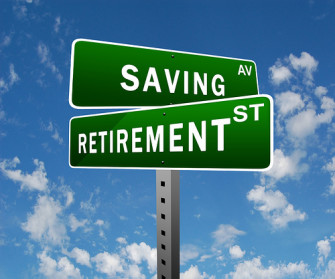5 Hard Facts About Retirement
 Saving for retirement is a monumental task. Unfortunately, today’s chronically low savings rates suggest that too many Americans don’t take it seriously enough. The better people understand the challenge of saving for retirement today, the more likely they are to focus on it. Here are five hard facts on retirement that illustrate that challenge.
Saving for retirement is a monumental task. Unfortunately, today’s chronically low savings rates suggest that too many Americans don’t take it seriously enough. The better people understand the challenge of saving for retirement today, the more likely they are to focus on it. Here are five hard facts on retirement that illustrate that challenge.
At age 65, Americans Live for an Average of 18.7 More Years
In other words, retirement is not just a few years tacked on after the end of your career. The likelihood is that it will represent 20-25 percent of your entire life. That’s a long time to live off of savings, and remember, roughly half the population lives longer than the average life expectancy, so you may need replacement income for more than just that 18.7-year average.
Inflation Cuts the Value of your Money in Half Every 22 Years
For nearly 100 years, U.S. inflation (as measured by the Consumer Price Index) has gone up at an average rate of 3.21 percent a year. At that rate, prices double every 22 years. Therefore, if you are 21 years old, you are likely to see prices double twice by the time you reach the retirement age of 65. Because of the compounding effect, this means things will be roughly four times as expensive at that point (i.e., a $1 item would double to $2 in the first 22 years, then that $2 would double to $4 in the second 22 years). So, if you are 21 now and think that $25,000 would be a reasonable amount of income in today’s dollars, you had better plan to save enough to provide $100,000 a year. Of course, given the average life span discussed above, you can also expect to see prices nearly double yet again during your retirement years.
Bank Accounts Produce a Fraction of the Income they Used to Generate
Prices may be rising inexorably, but CD and savings account rates have been heading in the opposite direction. According to figures from the Federal Reserve, five years ago a $100,000 short-term CD would have generated $4,780 in annual income. By late 2012, that same CD would generate only $190 in annual income. Low savings account rates mean you have to save more money to produce retirement income.
The Average Social Security Retirement Payment is Just $1,220 a Month
If you think Social Security will provide for you in retirement, you had better plan on a very low standard of living. That average retirement benefit comes to less than $15,000 a year. That can be an important piece of the retirement puzzle, but if you don’t supplement it with some retirement savings of your own, you’ll find Social Security is pretty thin as a sole means of support.
The Average Cost of an Assisted Living Facility is Close to $40,000 a Year
You can just about double that for a nursing home. The mismatch between these figures and the typical retirement benefit from Social Security underscores why some personal retirement savings are so essential. Coping with these challenges takes an early, consistent and meaningful effort. The above realities won’t just go away if you ignore them — they’ll simply wait to blindside you when you retire.

